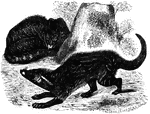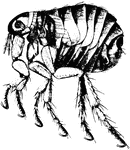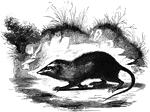
Raffle's Gymnure
The only species of the Gymnure genus, found in Sumatra. "It is little known, but seems to possess more…

Rhynchocyon
"Of this genus Gervais makes a seperate family. The only species is the R. Cernei. This has…
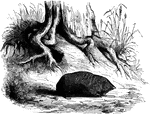
Chrysochloris Aurea
"These curious animals about three inches long, are exclusively African. They have a chunky body, small…

Kinkajou
"Of this genus there is a single species. A graceful animal, somewhat smaller than a cat, found in Guiana,…

Raccoon
"The raccoon is about twenty-six inches long; the tail eight inches; the weight twenty to twenty-five…

Crab-Eating Raccoon
"The raccoon is about twenty-six inches long; the tail eight inches; the weight twenty to twenty-five…
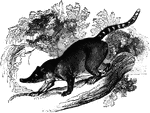
Coati Mondi
"They are distinguished by a long body, a long head terminating in a long flexible snout, with which…
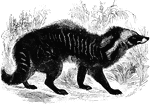
Civet
"Of this genus there are two species. The length of the elongated body of his animal is from two to…
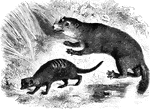
Cynogale
"Of this there is but a single species, the Cynogale Benneti. Its body is about eighteen inches…

Pougonie
"P. typus, is of a yellowish brown, marked with three ranges of obscure spots on the back.;…
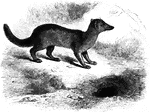
Euplere
"The single species of this genus, E. Goudotti, is of a slender form, about a foot in length,…
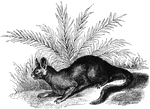
Cryptoprocta Ferox
"The only species, C. ferox, is but fifteen inches long, but its strength is great. Its disposition…
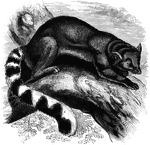
Ring-Tailed Bassaris
"It has a sharp, pointed nose, and a cunning expression, reminding one of a fox or raccoon. The body…

Eqyptian Ichneumon
Species of the genus Mangouste. This animal bears a close resemblance to the weasel tribe,…

Striped Galidictis
The G. striata is distinguished by its coloring, which consists of brown bands or strips on…
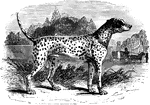
Dalmatian
"Its body is generally white, marked with numerous small round black, or reddish-brown spots. The dalmatian…
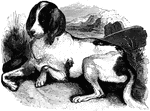
Old English Hound
"The old englsih hound is supposed to be the original stock of the island of Great Britain, and was…

Dingo
"This remarkable bred has the head elongated, the forehead flat, and the ears short and erect, or with…

Zouaves
"Encampment of Colonel Ellsworth's New York Fire Zuoaves, on the heights opposite the Navy Yard, Washington,…
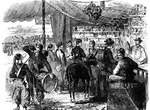
Sutler's Store
"A sutler's store, Harper's Ferry, Va. The sutler's store at Harper's Ferry represents one of those…

Battle of Savages Station
"Battle of Savages Station. Brigadier General Smith's division hotly engaged with the enemy, at noon,…

Battle of Malvern Hill
"Battle of Malvern Hill, near Turkey Bend, James River, Va., fought Tuesday, July 1st, 1862. The battle…

Camp Zagonyi
"Camp Zagonyi, encampment of Fremont's army on the prairie, near Wheatland, Mo., October 14th, 1861.…
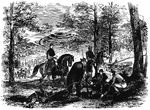
Battle of Corrick's Ford
"Battle of Carrick's Ford, Western Virginia- discovery of the body of General Garnett, by Major Gordon…

Confederate Schooner
"Bird's-eye view of the burning of a Confederate schooner in Quantico or Dumfries Creek, Potomac River,…
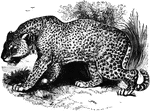
Leopard
"The Leopard, Felis leopardus, is about half the size of the tiger, being two feet high and…

Riman-Dihan
"F. macrocelis. It is four feet long, and one foot ten inches high; the color; whitish ashy…
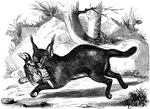
Caracal
"The Caracal, or Siyah Ghush, F. Caracal, is supposed by some to be the lynx of the ancients.…
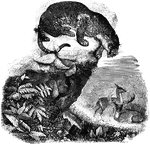
Jaguar
"Its length is four to five feet; the tail two feet; the height two feet; the ground-color of the body…
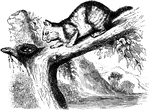
Canada Lynx
"The Canada Lynx of the Indians, has a round, broad head, large eyes, strong teeth, ears acute and tipped…

Cape Ratel
"The hair is stiff and wiry; body above, from the top of the head to the root of the tail, dull ash-gray,…

Marten
"Its head is somewhat triangular , the muzzle pointed, the eyes prominent and lively; the body much…

Weasel
An animal of the genus Mustela, having a long slender body, short legs, long slender tail, and light…
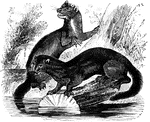
Mink
"The mink has a long slender body, the color varying in different species, is generally dark brown,…

Malabar Squirrel
"The largest species of the genus, being the size of a cat. A part of the body above is brilliant red…
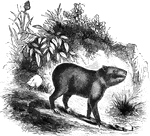
Capybara
"It measures three feet from muzzle to the hinder part, but has no tail. The general shape of the body…
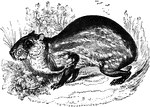
Brown Paca
"This animal, which is found in Brazil and the adjacent countries, and which once exsisted in the West…

Swinder's Aulacoe
"This is the size of a rabbit, of a brown color, with short legs and a long body, covered with short…
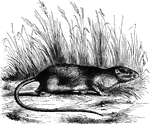
Spiny Rat
Cayenne Echimys, or spiny rat. Has a stout body, thick muzzle, short ears, long tail, and ample hair.

Brazilian Ceromys
"It is of a deep brown color above, paler on the flanks and cheeks, and whitish beneath; it is without…
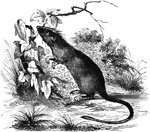
Crested Nelomys
"In its size and hte form of its tail it bears no inconsiderable resemblance to the common rat, the…

Dactylomys
"It is more than nine inches from the muzzle to the insertion of the tail, and the tail itself is twelve…

Cuvier's Lagotis
"Its general appearance reminds one of the hare. The body above is yellow, with a faint tinge of green…
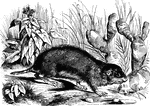
Brazilian Ctenomys
"Is reddish above and white beneath; body six inches long, and tail two inches. It lives near water,…
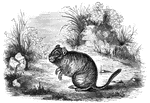
Octodon
"In size and shape, it resembles the water rat. The fur is long and moderately soft; upper parts of…

Pouched Rat
"Is of a reddish-brown color above, and dark-brown below; the body, which is stout and cylindrical,…

Confederate Cavalry
"Confederate cavalry driving stragglers and skulkers back to their duty at the Battle of Antietam. One…
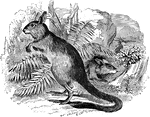
Cape Helamys
"These animals have a large head, a long body, long pointed ears, large eyes, and long hind-legs used…

Rock Rat
Petromys Typicus. "These animals move upon the hind-legs, which are not much larger than the fore-ones;…

Malacca Rhizomys
"These animals have a long body, small eyes, and short tails, and resemble mole-rats" — S. G.…

Garibaldi Guards
"Camp of the Garibaldi Guards, Colonel D'utassy, near Roche's Mills, Va., Potomac River in the distance.…

Federal supply train
"Confederate cavalry attacking a Federal supply train, near Jasper, Tenn. We give a sketch of the capture…

Dog at Winchester
"Sheridan's Campaign- an incident at the Battle of Winchester- a faithful dog watching and defending…

Strapped to ground
A view of Gulliver strapped to te ground with ligatures across his body. With curiosity the inhabitants…
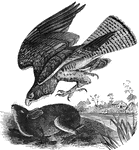
Common Buzzard of Europe
"B. vulgaris is twenty-two inches long, the head is large and the body heavy. Above, the color…

Brown Rat
A common brown rat. Lives in houses of thier own construction. Lives in everything from meadows to human…

Long Tailed Field Mouse
"It being four to five inches long, the tail nearly the length of the body. Its color is a yellowish-fawn…
